PenInHand - Musings on the Hobby
Making The Trade
by Jim Mamoulides, March 31, 2004
Anyone who hoards, um, collects pens is likely to reach a point of discovery where it's noticed that there are pens in the hoard, ah, collection that are languishing, just not getting the attention they deserve. They may be lonely, unused, and feeling uncared for. As on the Island of Misfit Toys (how's that for an appropriate analogy?), they feel they aren't wanted any longer. Pining for anyone to take them and let them sing across the page.
If you're really attached to every single last one of your pens, read no further. This will just be too painful for you. They're your children, after all. My precious!
If you want to hear a secret, read on!
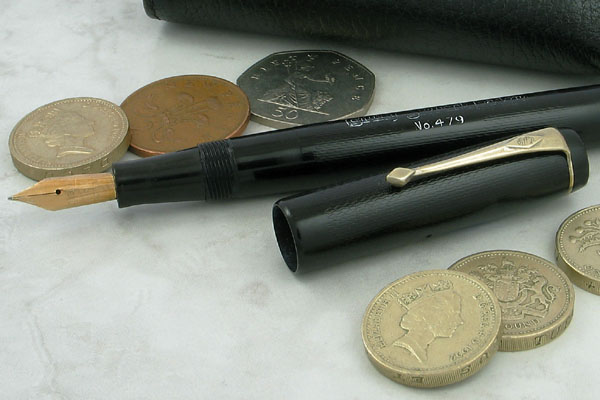
This Gorgeous Chased Conway Stewart Arrived
As Part Of A Trade
Should you sell these old soldiers, effectively putting them out to pasture for money? How gauche! That's what eBay is for, after all. Who knows what kind of home they will go to?
And we know what you're going to do with the money you get, don't we? Buy more pens! Of course!
So why not try a different tactic. Make a trade!
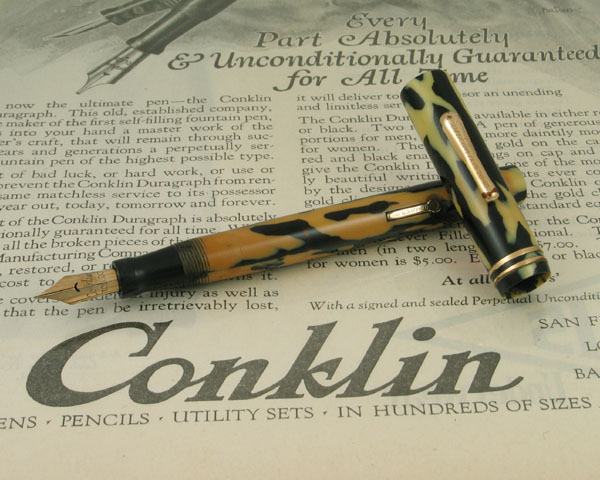
This Late 1920s Conklin
Black (Or Navy) And Cream Went Out With A Trade
Certainly you've noticed that there are other folks that inhabit this hobby who are sitting on pens that they, too are not using. That pen friend may have a few Parker 51s and finds them, well, boring. He's tried a Mabie Todd with a lovely, smooth, and wet nib at his last pen club meeting, but doesn't want to risk buying a goat on eBay, nor does he really have the funds to buy a fixed up one right now. It just so happens that you haven't met a 51 that you can't live without, and wouldn't use the two Mabie Todds you have if they were the only pens that worked. Sounds like the makings of a trade!
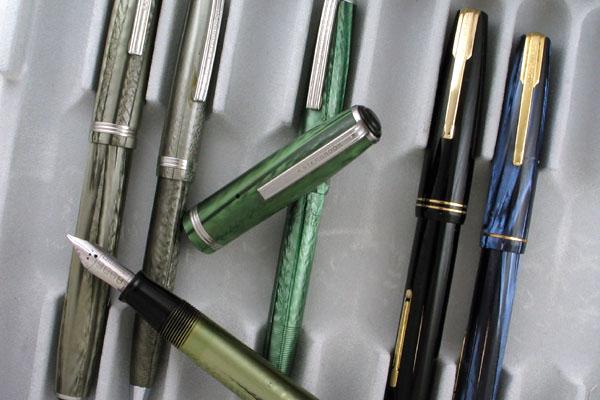
A Set Of Pens From Some Recent Trades
Some collectors "graze," wanting to take a bite from every possible pen that they can. They see trades as an opportunity to pass along the old and gather in the new. Others are cash strapped, but rich with extras, and may rather trade than deal with eBay or go through the hassle of selling and pursuing something new.
Some trades come up as an offer during a sale. A buyer may want a pen and really want to unload one. How about a trade?
Trades can be a great connection, and can get you a pen that has all its quirks identified. Surprises should be minimal.
Combination trades can be a lot of fun, where multiple pens are exchanged on one or both sides. This is an opportunity for spring cleaning and for multiple new pens to play with.
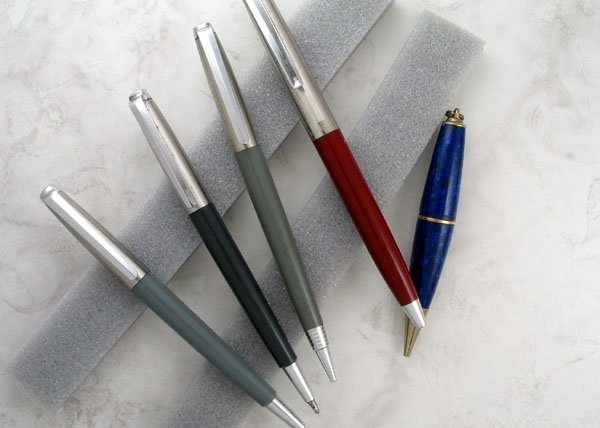
I Happen To Like Liquid Lead Pencils,
And This Batch Had Three!
Some Basics
However a trade starts, there are some things you should do in order to make sure that you and the other party walk away with a good deal. It's not real complicated, and good communication and some old fashioned customer service, with an important dash of trust, are the keys to success.
1. Discuss the items and terms in advance. Never send or receive anything in trade until both parties understand the rules.
2. Be descriptive, both ways. A trade is based on trust and perceived value, and both parties should be trying to make the deal even. The biggest problem in a trade is matching expectations with reality. If you can take pictures, that's a great start, but describe each piece's quirks and faults in some detail. No matter how good a photographer you think you are, unless the pen is mint, unused, there may be scratches, dings, discoloration, and other flaws that you don't want to appear as surprises.
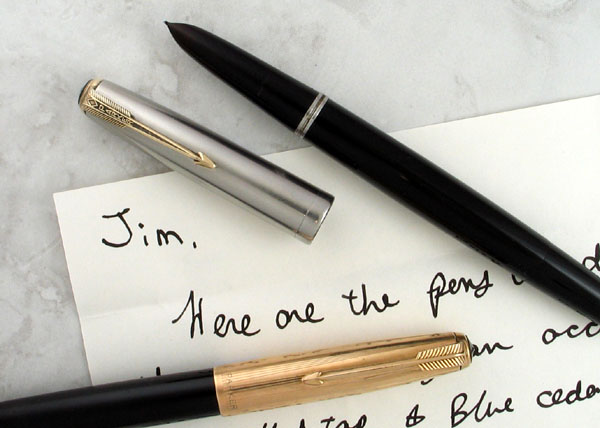
There's No Such Thing As Too Many Parker
51s!
3. Trade on value, not your cost. If you have a Parker 51 that typically sells for US $100.00, then that's the trade value. Try to make the trade with $100.00 worth of pens. Retail prices mean nothing in a trade. Most pens are like cars. Once you drive it off the lot, significant depreciation sets in. Many pens are deeply discounted, so the street price is more a measure of its retail value anyway. No one's going to trade you for something that they can buy new for the same price. Do some research on typical selling prices for your pen in its current condition. Make the other party agree to the same terms.
4. Agree to take it all back. Some trades, like some sales, aren't going to work. Both parties should agree to undo the trade if either is unhappy with their deal. Put a time limit on this. Ten days, for example. This takes away any issue of unfairness. If both parties know that the deal could fall through if it's not received as fair, they should work harder to make a good deal. This also establishes trust between the parties for future deals.
5. Write it all down. You don't have to write a contract, but do write down what the agreement is, and have both parties acknowledge it.
If you're nervous about trading, stick to people you know, or know their reputations. Start small with people you don't know, or do the trade face to face. Pen clubs are a great place for this. You can work out all the terms up front and bring your pens with you.
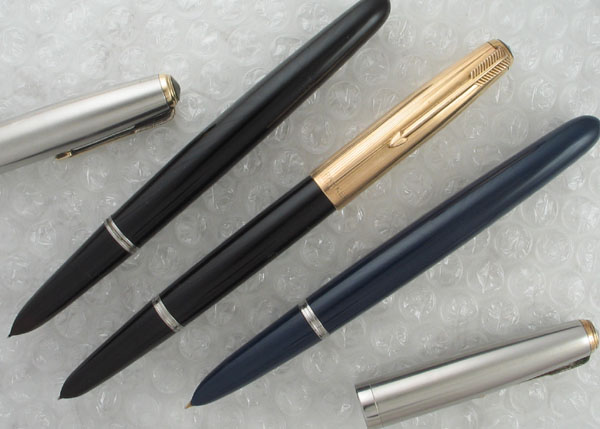
It's Fun To Open The
Bubble Wrap And See What's Inside!
The best part about trading is getting new pens to play with without having to hit your wallet. It also gives you the chance to turn the pens you aren't using into something more interesting. And who doesn't like getting new pens?
I'll take those two Snorks for that PFM I.
Discuss / Recommend what you read on PenHero.com
Follow us on Twitter: PenHero
Add a link to PenHero.com on your blog:
(Copy & paste code)
Please only use the photo provided. Use of other photos requires permission.
The provided link photo will change as we update the site.
Comments on this article may be sent
to the author, Jim Mamoulides
PenHero.com Bibliography
